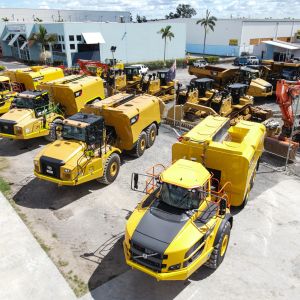“We” need to do better. Australia has had great times and until a year ago over 30 years of uninterrupted growth and improved prosperity. Unfortunately, we’ve kind of just been along for the ride. Now is the time for our industry to stand up for itself – sell the message of what we do well; and equally importantly to improve what we do and how we do it. Easy said, much harder to do, but here goes with a couple of examples!
It’s been great to hear the Mining industry start to come out and blow its own trumpet as to how important our biggest export industry is to Australia’s fortunes. This is well overdue, as the Industry associations and companies have been asleep at the wheel when many of the recent “reforms” were passed through, and will now wear the consequences.
BHP finally joined the ring and understood that if they said they injected $50 billion into the Australian economy and paid $14.5 billion in various taxes it would have met with just glazed eyes. Instead, they put it into context: BHP alone last year funded half of what the Government spends to run all the public hospitals across Australia. They also paid $5.6 billion in wages and $10.5 billion in Dividends mostly into super funds, which many retirees rely on.
BHP alone also paid 9% of all Government revenue in Qld (and 11% in WA). So the Qld Governments “reward” just days before going into care taker mode before the election was to put in place a law that any future Treasurer can’t alter the Royalties rate (which is the highest in the world by far) unless they change legislation – basically locking in another bomb for a future Government to disarm.
We need more companies and Industry bodies to do what BHP has done and speak up in plain language.
Last month’s article drew a lot of comments. Why can’t we get better value now than we did 100 years ago? The catchy answer is to blame all the colours of tape. Whilst that would be correct, “we” also need to take responsibility for this and do something about it. But many people can’t explain what “tape” is or what it actually looks like. Most people are too afraid to speak out, so I’ll use an example from observations that probably everyone who drives on our roads sees every day: traffic control.
I’m not referring to the rates of pay, as traffic controllers get paid on a broad scale from about $60,000 to $240,000 per annum for a normal work week. Nor do I have column space to go into the award conditions, that mean that in some cases people can only work about half of each year.
Examples of “tape” is this: We had a utility provider with 2 people working on the footpath section nearby recently, about 4 meters to the side of where the bitumen ended. They put up cones along the gravel edge (no problems). The workers had a car and a truck parked down a side street, but the road they were working on was unobstructed. As there was a three-way intersection nearby, they then put three traffic controllers to stop traffic.
I’m all for safety, which is why apart from the cost, I struggle with these aspects:
- How is putting 3 people on the road in harm’s way amongst trucks and cars possibly adding to safety?
- Traffic negotiates the exact same road conditions every day. If you want to improve the safety for the 2 people actually doing work, it would make far more sense to park the truck on the 4m verge on one side, and the car at the other end of the workspace, creating a physical barrier.
- The day after this utility provider conducted their work, there was another utility provider doing work literally just meters further up the road. They just had cones up (and a vehicle parked strategically). Our staff commented about traffic issues when the traffic controllers were there, but there were no complaints the days when the world just carried on and managed by itself.
The inconsistency of what is safe actually causes safety issues.
Another example of how the public gets put off by infrastructure work can be found on road works sites. Everyone should observe reduced speed limits at road works, but how can we expect respect for reduced speed limits when the signs are left up when there is no work being carried out and the road is as safe as normal? Can’t have it both ways.
Another big gripe is seeing a Police car on work sites parked after a traffic management truck (you know, the ones with the big boards and flashing lights). What does the police car achieve? With rampant crime and real issues with the way some people drive, wouldn’t the scarce police resources be much better utilised doing actual policing?
The above is far from exhaustive, but just some examples of where perhaps our industry should take a good hard look at ourselves. If we want to get people on board to support building more infrastructure, let’s remove things that make it much harder for them to “like” the work we do (by removing inconvenience). We also need to make sure they see that they are getting value for money by removing things that make it look like someone is taking the piss.
Words from the wise
“If I say “First of all” – run away because I have prepared research, data, charts and will destroy you.” – unknown.
“I believe we should all pay our tax with a smile. I tried – but they wanted cash.” – unknown.
“Don’t tell me what you value, show me your budget, and I’ll tell you what you value” – Joe Biden, basically saying what you spend your money on is what you consider important (who’d a thought Biden would make my list of Words from the wise…open mind).
As always, Onwards and Upwards!
Fred Carlsson
General Manager



